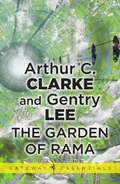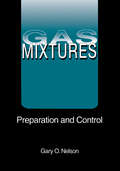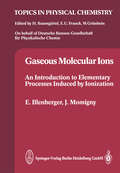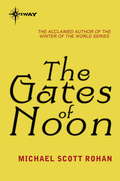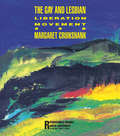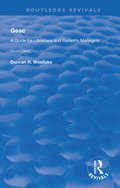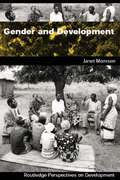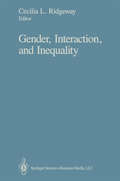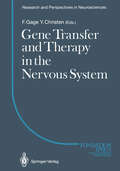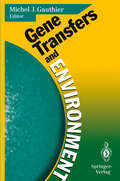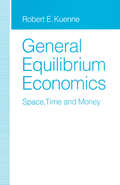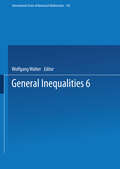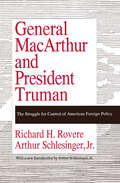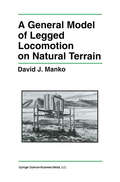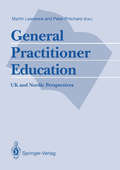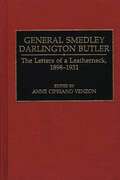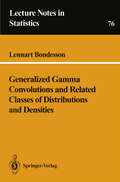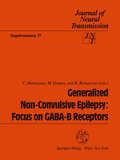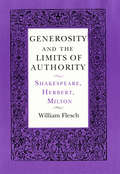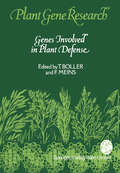- Table View
- List View
The Garden of Rama (Gateway Essentials #3)
by Gentry Lee Sir Arthur C. ClarkeIn the year 2130 a mysterious spaceship, Rama, arrived in the solar system. It was huge - big enough to contain a city and a sea - and empty, apparently abandoned. By the time Rama departed for its next, unknown, destination many wonders had been uncovered, but few mysteries solved. Only one thing was clear: everything the enigmatic builders of Rama did, they did in threes.Eighty years later the second alien craft arrived in the solar system. This time, Earth had been waiting. But all the years of preparation were not enough to unlock the Raman enigma.Now Rama II is on its way out of the solar system. Aboard it are three humans, two men and a woman, left behind when the expedition departed. Ahead of them lies the unknown, a voyage no human has ever experienced. And at the end of it - and who could tell how many years away that might be? - may lie the truth about Rama...
Gas Mixtures: Preparation and Control
by Gary NelsonGas Mixtures provides practical suggestions and calculations for producing multicomponent test gas atmospheres. General topics addressed include sorbent evaluation, methods development, dosimeter testing, instrument calibration, atmospheric simulation, and gas analysis. Learn the tricks of the trade for producing gas mixtures over a wide range of concentrations using even the most difficult-to-handle materials. Gas Mixtures is a must for industrial hygienists, air pollution control specialists, analytical chemists, and others working in such areas as health and safety, air pollution, air cleaning, and respirator and carbon research.
Gas Mixtures: Preparation and Control
by Gary NelsonGas Mixtures provides practical suggestions and calculations for producing multicomponent test gas atmospheres. General topics addressed include sorbent evaluation, methods development, dosimeter testing, instrument calibration, atmospheric simulation, and gas analysis. Learn the tricks of the trade for producing gas mixtures over a wide range of concentrations using even the most difficult-to-handle materials. Gas Mixtures is a must for industrial hygienists, air pollution control specialists, analytical chemists, and others working in such areas as health and safety, air pollution, air cleaning, and respirator and carbon research.
Gas Sensors: Principles, Operation and Developments
by G. SberveglieriThere were two reasons that induced me to plan and to organize this book, the first was the lack of a text entirely devoted to the subject of gas sensors, notwithstanding some books devoted to the various kind of chemical sensors have recently been published. The second reason was the need of introducing the basic topics of gas detection mechanisms to a growing number of researchers active in research and development laboratories of industries and uni versities. The field of chemical sensors is indeed in fast and consistent growth, as it is proved by the increased number of participants to the congresses that were recently held on this subject, namely the Third Meeting on Chemical Sensors (September 24 - 26, 1990, Cleveland), Transducers' 91 (June 24 - 27, 1991, S. Francisco) and EUROSENSORS V (September 30 - October 3, 1991, Rome). Therefore, this book is mainly intended as a reference text for researchers with a MS degree in physics, chemistry and electrical engineering; it reports the last progresses in the R. & D. and in the technology of gas sensors. I choose to deal specifically with the topic of gas sensors because these devices show a very large number of applications in the domestic and industrial field and they are characterized by a great effort of research and development.
Gaseous Molecular Ions: An Introduction to Elementary Processes Induced by Ionization (Topics in Physical Chemistry #2)
by Eugen Illenberger Jacques MomignyMost of the matter in our solar system, and, probably, within the whole universe, exists in the form of ionized particles. On the other hand, in our natural environ ment, gaseous matter generally consists of neutral atoms and molecules. Only under certain conditions, such as within the path oflightning or in several technical devices (e. g. gas discharges, rocket engines, etc. ) will some of the atoms and molecules be ionized. It is also believed that the chemistry of the earth's troposphere predomi nantly proceeds via reactions between neutral particles. (The complex system of atmospheric chemistry will be treated in one of the forthcoming volumes to this series. ) Why, then, are ions considered so important that hundreds oflaboratories all over the world (including some of the most prestigious) are involved in research pro grams on ions, covering many different facets, from biochemistry to physics? One may obtain as many different answers as there are research groups busy in this field. There is, however, one simple, common feature which makes it attractive to work with ions: since they carry one or more net elementary charges, they can easily be gui ded, focused or separated by appropriate electric and magnetic fields, and, last but not least, they can easily be detected. Apart from these advantages, which are welcome and appreciated by the researcher, the study of molecular ions can provide insight into very fundamental aspects of the general behavior of molecules.
The Gates of Noon (Spiral #2)
by Michael Scott Rohan'East of the sun and west of the moon...'...you may find a freighter carrying ivory to Huy Braseal, mammoth tusks to Tartessos and Ashkelon, spices from Cathay to Lyonesse. Another world, of infinite strangeness and high adventure, yet never far from our own; round a corner, through a door into a harbourside inn and you may find yourself there.Steve Fisher had been there once, had sailed the cloud archipelagos on a desperate quest to Hispaniola. Or had he? The memories have faded...was it only a dream? Then, in Bangkok, as he struggles to arrange a shipment of vital supplies to the endangered paradise of Bali, Steve finds himself catapulted back into that world, through the eerie gates of the Spiral - and into terrible dangers. For our there is something that wants him stopped, at any costs.Shadows from the past, from the present - and from somewhere that is neither, where myths and legends and terrifying archetypes stalk the world. Entangles by old loves and ancient hatreds, with witches and warlocks to help him and the original Bogeyman on his trail, Steve must fight to reconcile past and present in an epic battle of wits which leads him from the sleazy sex bars of Bangkok to the mist-shrouded islands of the South Seas...
The Gay and Lesbian Liberation Movement (Revolutionary Thought and Radical Movements)
by Margaret CruikshankFirst Published in 1992. Routledge is an imprint of Taylor & Francis, an informa company.
The Gay and Lesbian Liberation Movement (Revolutionary Thought and Radical Movements)
by Margaret CruikshankFirst Published in 1992. Routledge is an imprint of Taylor & Francis, an informa company.
GEAC: A Guide for Librarians and Systems Managers (Routledge Revivals)
by Duncan R WestlakeFirst published in 1992, this guide examines GEAC's place in the automated libraries' market and describes the hardware and software products available. It serves as both an introduction to, and a description of, the products GEAC sell to libraries, which would be of interest to current users as well as prospective purchasers and students. An account of how the system is initially set up and run is followed by descriptions of the circulation, cataloguing, acquisitions and local information packages. Other chapters cover management information and communication with external networks. This guide represents the experiences of users of the systems.
GEAC: A Guide for Librarians and Systems Managers (Routledge Revivals)
by Duncan R WestlakeFirst published in 1992, this guide examines GEAC's place in the automated libraries' market and describes the hardware and software products available. It serves as both an introduction to, and a description of, the products GEAC sell to libraries, which would be of interest to current users as well as prospective purchasers and students. An account of how the system is initially set up and run is followed by descriptions of the circulation, cataloguing, acquisitions and local information packages. Other chapters cover management information and communication with external networks. This guide represents the experiences of users of the systems.
Gender and Development
by Janet Henshall MomsenIn third world countries gender roles are different from those in western countries. This reality is of utmost interest for development policy makers. planners and project designers from donor countries.More often than not, development projects, sponsored and implemented by western organizations, reflect ethnocentric biases about the sexual division of labour, rights and responsibilities, based on standards from the donor country. Too many projects have failed or not had the intended beneficial effect on those in need, because they were administered with very little insight into gender relations.This volume deals with the importance of gender relations in crucial areas of development such as agriculture, employment, housing, transport, health and household management, and it underlines the necessity of having statistical materials that realistically reflect gender differentials.
Gender, Interaction, and Inequality
by Cecilia L. RidgewayCausal explanations are essential for theory building. In focusing on causal mechanisms rather than descriptive effects, the goal of this volume is to increase our theoretical understanding of the way gender operates in interaction. Theoretical analyses of gender's effects in interaction, in turn, are necessary to understand how such effects might be implicated with individual-level and social structural-level processes in the larger system of gender inequality. Despite other differences, the contributors to this book all take what might be loosely called a "microstructural" approach to gender and interaction. All agree that individuals come to interaction with certain common, socially created beliefs, cultural meanings, experiences, and social rules. These include stereotypes about gendered activities and skills, beliefs about the status value of gender, rules for interacting in certain settings, and so on. However, as individuals apply these beliefs and rules to the specific contingent events of interaction, they combine and reshape their implications in distinctive ways that are particular to the encounter. As a result, individuals actively construct their social relations in the encounter through their interaction. The patterns of relations that develop are not completely determined or scripted in advance by the beliefs and rules of the larger society. Consequently, there is a reciprocal causal relationship between constructed patterns of interaction and larger social structural forms. The constructed patterns of social relations among a set of interactants can be thought of as micro-level social structures or, more simply, "microstructures.
Gene Transfer and Therapy in the Nervous System (Research and Perspectives in Neurosciences)
by Fred H. GageGene Transfers and Environment: Proceedings of the Third European Meeting on Bacterial Genetics and Ecology (BAGECO-3), 20–22 November 1991, Villefranche-sur-Mer, France
by Michel J. GauthierProvided here is an up-to-date survey of gene transfers in the main natural habitats, with a special reference to genetically engineered microorganisms.In the first of five sections technical approaches of gene transfer in the natural environment are developed. These emphasize the use of modernmethodologies for the detection of recombinant bacteria in natural waters and soil, using DNA or rRNA probes and PCR technology. The three following sections deal with various aspects of gene transfer in aquatic environments, terrestrial habitats and human and animal gut. These include transfer of plasmidic or chromosomal markers through either conjugation, mobilization, transformation or transduction processes. Also covered are factors influencing survival of cells harbouring the transferred genes in these environments. The last section is devoted to an examination of scientific and ethical problems related to the release of genetically engineered microorganisms.
General Equilibrium Economics: Space, Time and Money
by Robert E. KuenneA collection of published papers in general equilibrium that explore the basic problems of extensive interdependence in models incorporating oligopoly, space, time and money. Robert E. Kuenne has also written "The Theory of General Economic Equilibrium".
General Inequalities 6: 6th International Conference on General Inequalities, Oberwolfach, Dec. 9–15, 1990 (International Series of Numerical Mathematics #103)
by Wolfgang WalterThe sixthInternational Conference on General Inequalities was held from Dec. 9 to Dec. 15, 1990, at the Mathematisches Forschungsinstitut Oberwolfach (Black Fa rest, Germany). The organizing committee was composed of W.N. Everitt (Birm ingham), L. Losonczi (Debrecen) and W. Walter (Karlsruhe). Dr. A. Kovacec ( Coimbra) served cheerfully and efficiently as secretary of the meeting. The con ference was attended by 44 participants from 20 countries. Yet again the importance of inequalities in both pure and applied mathematics was made evident from the wide range of interests of the individual participants, and from the wealth of new results announced. New inequalities were presented in the usual spread of the subject areas now expected for these meetings: Classical and functional analysis, existence and boundary value problems for both ordinary and partial differential equations, with special contributions to computer science, quantum holography and error analysis. More strongly than ever, the role played by modern electronic computers was made clear in testing out and prohing into the validity and structure of certain inequalities. Here the computer acts not only for numerical calculations of great complexity, but also in symbolic manipulation of complex finite structures. Prob lems in inequalities which even a few years ago were intractable, now fall to solution or receive direct and positive guidance as a result of computer applications. The interface between finite and infinite structures in mathematics and the versatility of modern computers is weil developed in the subject of general inequalities.
General MacArthur and President Truman: The Struggle for Control of American Foreign Policy
by Richard H. RovereThis book was first published in 1951 as The General and the President after President Harry S. Truman relieved General Douglas MacArthur in the midst of the Korean War -a memorably explosive incident in American political history. But its significance extends far beyond a dramatic episode in the nation's past. This literate and ironic work continues to be an invaluable guide to the conflict between civilian and military authority, and it illuminates later and currentcontroversies over the role the United States should play in Asian affairs. This new edition is graced by a remarkable introductory essay by Arthur Schlesinger, Jr. The text is reprinted from the 1965 republication under the title The MacArthur Controversy, that is, the book as originally written with a few tenses altered and a few topical allusions deleted. General MacArthur and President Truman will be of special interest to students of American diplomacy, politics, and culture and to all concerned with the relationship between the armed forces and larger society.
General MacArthur and President Truman: The Struggle for Control of American Foreign Policy (Transaction Large Print Ser.)
by Richard H. RovereThis book was first published in 1951 as The General and the President after President Harry S. Truman relieved General Douglas MacArthur in the midst of the Korean War -a memorably explosive incident in American political history. But its significance extends far beyond a dramatic episode in the nation's past. This literate and ironic work continues to be an invaluable guide to the conflict between civilian and military authority, and it illuminates later and currentcontroversies over the role the United States should play in Asian affairs. This new edition is graced by a remarkable introductory essay by Arthur Schlesinger, Jr. The text is reprinted from the 1965 republication under the title The MacArthur Controversy, that is, the book as originally written with a few tenses altered and a few topical allusions deleted. General MacArthur and President Truman will be of special interest to students of American diplomacy, politics, and culture and to all concerned with the relationship between the armed forces and larger society.
A General Model of Legged Locomotion on Natural Terrain (The Springer International Series in Engineering and Computer Science #179)
by David J. MankoDynamic modeling is the fundamental building block for mechanism analysis, design, control and performance evaluation. One class of mechanism, legged machines, have multiple closed-chains established through intermittent ground contacts. Further, walking on natural terrain introduces nonlinear system compliance in the forms of foot sinkage and slippage. Closed-chains constrain the possible motions of a mechanism while compliances affect the redistribution of forces throughout the system. A General Model of Legged Locomotion on Natural Terrain develops a dynamic mechanism model that characterizes indeterminate interactions of a closed-chain robot with its environment. The approach is applicable to any closed-chain mechanism with sufficient contact compliance, although legged locomotion on natural terrain is chosen to illustrate the methodology. The modeling and solution procedures are general to all walking machine configurations, including bipeds, quadrupeds, beam-walkers and hopping machines. This work develops a functional model of legged locomotion that incorporates, for the first time, non-conservative foot-soil interactions in a nonlinear dynamic formulation. The model was applied to a prototype walking machine, and simulations generated significant insights into walking machine performance on natural terrain. The simulations are original and essential contributions to the design, evaluation and control of these complex robot systems. While posed in the context of walking machines, the approach has wider applicability to rolling locomotors, cooperating manipulators, multi-fingered hands, and prehensile agents.
General Practitioner Education: UK and Nordic Perspectives
by Martin Lawrence and Peter PritchardA workshop to look at strategies, methods of implementation and evaluation of vocational training and Continuing Medical Education in General Practice was held in June 1990 in London. This text represents papers written by contributors to the workshop and pre-circulated papers which describe health systems and educational realities in six countries: Denmark, Finland, Iceland, Norway, Sweden and the UK. The first part of the books compares the structure care systems and General Practice education in the UK and Nordic countries. The second part reviews teaching under five headings, each introduced by a brief commmentary highlighting the main issues and indicating the consensus view. Of particular note is the last chapter which presents demography and health service organization, arrangements for General Practice and primary health care, vocational (specialists) training of GPs, and continuing medical education for each of the six countries.
General Smedley Darlington Butler: The Letters of a Leatherneck, 1898-1931
by Ann Cipriano VenzonMajor General Smedley Darlington Butler was a maverick Marine, the emblem of the old corps, and one of the most controversial figures in Marine history. He was a high school dropout who became a major general; a Quaker and a devout family man who was one of the toughest of the Marines; an aristocrat who championed the common man; a leader who thought of himself as striving to help the oppressed of the countries he occupied as the commander of an imperial fighting force. This work is an annotated edition of his letters covering the period from Butler's commissioning as a Second Lieutenant in the U.S. Marine Corps to his retirement as a Major General.This is the first time the majority of these letters have been made public, and the book offers the reader a first-hand look at the motivations and attitudes of the American military as it implemented U.S. foreign policy at the turn of the century. There is extensive coverage of U.S. interventions in Nicaragua, Haiti, and China from a man on the scene, offering an immediate perspective to those events. General Butler won two Congressional Medals of Honor, as well as numerous other U.S. and foreign medals, including two Umbrellas of Ten Thousand Blessings from two Chinese cities--honors never before given to a non-Chinese. Military and diplomatic historians, as well as Marine and Navy enthusiasts, will find this superbly edited and annotated collection of interest and value.
Generalized Gamma Convolutions and Related Classes of Distributions and Densities (Lecture Notes in Statistics #76)
by Lennart BondessonGeneralized Gamma convolutions were introduced by Olof Thorin in 1977 and were used by him to show that, in particular, the Lognormal distribution is infinitely divisible. After that a large number of papers rapidly appeared with new results in a somewhat random order. Many of the papers appeared in the Scandinavian Actuarial Journal. This work is an attempt to present the main results on this class of probability distributions and related classes in a rather logical order. The goal has been to be on a level that is not too advanced. However, since the field is rather technical, most readers will find difficult passages in the text. Those who do not want to visit a mysterious land situated between the land of probability theory and statistics and the land of classical analysis should not look at this work. When some years ago I submitted a survey to a journal it was suggested by the editor, K. Krickeberg, that it should be expanded to a book. However, at that time I was rather reluctant to do so since there remained so many problems to be solved or to be solved in a smoother way than before. Moreover, there was at that time some lack of probabilistic interpretations and applications. Many of the problems are now solved but still it is felt that more applications than those presented in the work could be found.
Generalized Non-Convulsive Epilepsy: Focus on GABA-B Receptors (Journal of Neural Transmission. Supplementa #35)
by R. Bernasconi M. Vergnes C. MarescauxGeneralized non convulsive epilepsy (GNCE), also called absence or petit mal epilepsy, is a disease appearing during childhood. EEG, clinical, pharmacological and genetic characteristics differ from those of convulsive or focal epilepsies. No underlying structural or biochemical abnormality has been identified for generalized absence seizures and the etiology of this disorder is unknown. It is unlikely that the precise pathophysiology of GNCE can be resolved in studies that focus on humans. Therefore a number of animal models reproducing the human disease have been developed. The aim of this supplementum is to characterize such models in rodents. First, recent models are extensively described. These include the genetic model of spontaneous GNCE in Strasbourg's Wistar rats and in tottering mice as well as bilateral spike and wave discharges induced by GHB, PTZ or GABA mimetics. Second, this supplementum will also provide very recent information on putative mechanisms underlying generalized absence seizures. Third, various experimental approaches aimed at investigating the neural substrate of this particular kind of epilepsy are described with various electrophysiological, pharmacological, biochemical, metabolic, ionic and molecular data. This supplementum provides an original multidisciplinary approach to the mechanisms involved in GNCE and demonstrates that rodent models are a promising tool which complements the classical feline penicillin model.
Generosity and the Limits of Authority: Shakespeare, Herbert, Milton
by William FleschGenerosity is an ambiguous quality, William Flesch observes; while receiving gifts is pleasant, gift-giving both displays the wealth and strength of the giver and places the receiver under an obligation. In provocative new readings of Shakespeare, Herbert, and Milton, Flesch illuminates the personal authority that is bound inextricably with acts of generosity.Drawing on the work of such theorists as Mauss, Blanchot, Bourdieu, Wittgenstein, Bloom, Cavell, and Greenblatt, Flesch maintains that the literary power of Shakespeare, Herbert, and Milton is at its most intense when they are exploring the limits of generosity. He considers how in Herbert's Temple divine assurance of the possibility of redemption is put into question and how the poet approaches such a gift with the ambivalence of a beneficiary. In his readings of Shakespeare's Richard II, Henry IV, King Lear, Antony and Cleopatra, and the sonnets, Flesch examines the perspective of the benefactor—including Shakespeare himself—who confronts the decline of his capacity to give. Turning to Milton's Paradise Lost, Flesch identifies two opposing ways of understanding generosity—Satan's, on the one hand, and Adam and Eve's, on the other - and elaborates the different conceptions of poetry to which these understandings give rise.Scholars of Shakespeare and of Renaissance culture, Miltonists, literary theorists, and others interested in the relationship between philosophy and literature will want to read this insightful and challenging book.
Genes Involved in Plant Defense (Plant Gene Research)
by Thomas Boller Frederick MeinsMany fungi and bacteria that associate with plants are potentially harmful and can cause disease, while others enter into mutually beneficial sym bioses. Co-evolution of plants with pathogenic and symbiotic microbes has lead to refined mechanisms of reciprocal recognition, defense and counter defense. Genes in both partners determine and regulate these mechanisms. A detailed understanding of these genes provides basic biological insights as well as a starting point for developing novel methods of crop protection against pathogens. This volume deals with defense-related genes of plants and their regulation as well as with the genes of microbes involved in their interaction with plants. Our discussion begins at the level of populations and addresses the complex interaction of plant and microbial genes in multigenic disease resistance and its significance for crop protection as compared to mono genic resistance (Chap. 1). Although monogenic disease resistance may have its problems in the practice of crop protection, it is appealing to the experimentalist: in the so-called gene-for-gene systems, single genes in the plant and in the pathogen specify the compatibility or incompatibility of an interaction providing an ideal experimental system for studying events at the molecular level (Chaps. 2 and 4). Good progress has been made in identifying viral, bacterial, and fungal genes important in virulence and host range (Chaps. 3-6). An important aspect of plant-microbe interactions is the exchange of chemical signals. Microbes can respond to chemical signals of plant origin.
